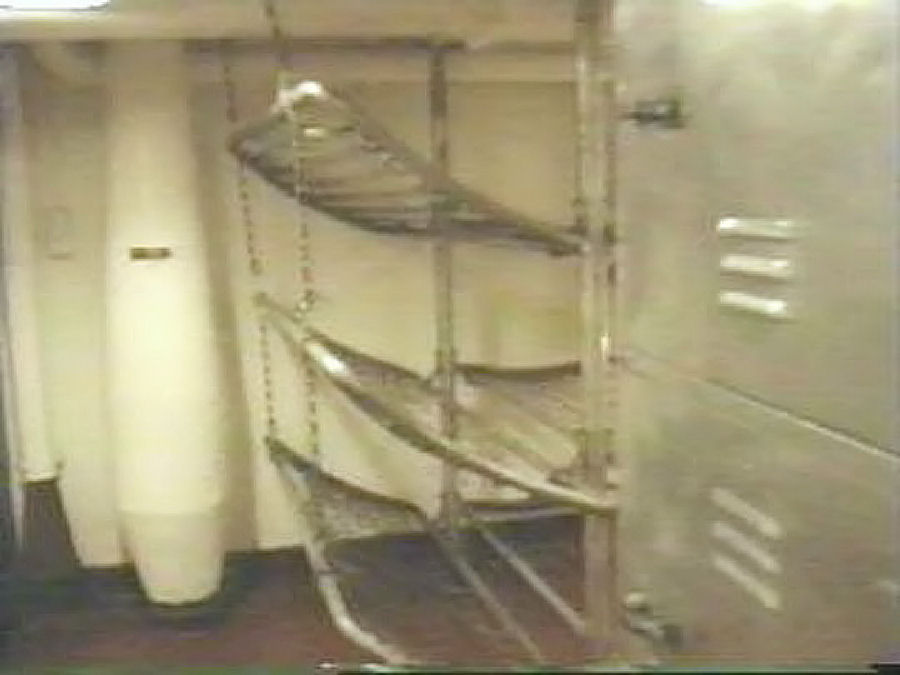ships
armor
THERE
IS NO EVIDENCE
OF ARMOR
IN DRY DOCK
->
Armor distribution on
any warship is a
trade-off between protection and weight. If the armor is increased, the
weight also increases, which results in slower top end speed and
maneuverability.
The vertical side armor consists of an upper and lower belt which is
inclined
to an angle of 19 degrees. The total depth of the belt is 38 feet 6
inches
and extends from just before turret 1 to just aft of turret 3. The
upper
belt is Class A armor, 12.1 inches thick, while the lower belt is Class
B armor, 12.1 inches thick at the top and tapered to 1.62 inches at the
bottom. |
 |
..

..
| The deck consists of
three parts,
the bomb deck, the main armor deck, and the splinter deck. The bomb
deck
is 1.5 inches STS plate, the main armor deck is 4.75 inches Class B
armor
laid on 1.25 inches STS plate and the splinter deck is 0.625 inches STS
plate. The bomb deck is designed to detonate general purpose bombs on
contact
and arm armor piercing bombs so they will explode between the bomb deck
and the main armor deck. Within the immune zone, the main armor deck is
designed to defeat plunging shells which may penetrate the bomb deck.
The
splinter deck is designed to contain any fragments and pieces of armor
which might be broken off from the main armor deck.
Turret armor is
constructed from a
combination of Class A and Class B armor and STS plate. The faces of
the
turrets are 17I inches Class B armor over 2.5 inches STS plate. The
side
plates are 9.5 inches Class A armor on .75 inch STS plate. The back
plates
are 12 inches Class A armor and the turret roofs are 7.25 inches Class
B armor.
The conning tower is
constructed from
segments of Class B armor 17.3 inches thick. BB61 is three levels and
BB62
on had 2 levels (the flag level was omitted). Roof plates are 7.25
inches
Class B and the floor is 4 inches STS. The conning tower is connected
to
the citadel by a communications tube with a wall thickness of 16 inches
of Class B armor.
|
|


